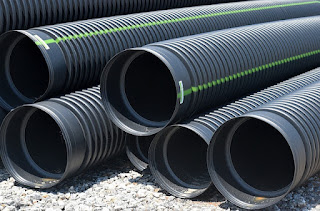What makes PPR-C pipes by KPT Piping System special?
KPT PPR-C pipes offer a range of benefits, including preventing rust and deterioration, ensuring a longer lifespan, enhancing the safety of fluid transport, reducing maintenance costs, and mitigating environmental risks. These advantages make them a popular choice for various piping applications.
Anti-corrosive:
KPT PPR-C pipes prevent rust and deterioration, ensuring a longer lifespan and safer transport of fluids, reducing maintenance costs and environmental risks.
Longer Lifespan:
Due to their resistance to rust and deterioration, PPR-C pipes generally have a longer lifespan compared to metal pipes. This extended lifespan can result in cost savings over time because you won't need to replace the pipes as frequently.
Safer Transport of Fluids:
PPR-C pipes are known for their excellent chemical resistance. They are often used in the transport of various fluids, including drinking water, chemicals, and gases. Their resistance to corrosion and their non-toxic nature make them a safe choice for conveying these substances.
Reducing Maintenance Costs:
Since PPR-C pipes are less prone to corrosion and deterioration, they typically require less maintenance compared to metal pipes. This can lead to reduced maintenance costs and less downtime for repairs.
Reducing Environmental Risks:
The use of PPR-C pipes can contribute to reducing environmental risks. For example, by preventing leaks and corrosion, these pipes can help prevent the release of harmful chemicals into the environment. Additionally, their longer lifespan means fewer resources are needed for replacements, which can have a positive environmental impact.
Chemical-resistance:
KPT PPR-C pipes resist the corrosive effects of acids, preventing leakage and contamination and ensuring safety, durability, and cost-effective performance.
Works efficiently at high-pressure
KPT PPR-C pipes withstand high pressure of up to 20 kg/sqcm. They can safely transport fluids under intense conditions, enabling efficient operations, and are ideal for high-pressure applications such as compressed air lines.
Low Pressure Drop :
KPT PPR-C pipes are smooth and non-porous, reducing pressure loss. It minimizes energy consumption, maintains higher flow rates, and lowers the risk of system inefficiencies.
Temperature Resistance :
KPT PPR-C pipes can withstand temperatures from 2 °C to 95 °C without losing structural integrity, preventing deformation or leaks, ensuring reliable performance, and maintaining the safety and efficiency of fluid transport processes.
KPT Piping System's PPR-C pipes stand out for several key reasons. Firstly, their remarkable anti-corrosive properties ensure the longevity and safety of fluid transport systems by preventing rust and deterioration. This not only reduces maintenance costs but also mitigates environmental risks associated with leaks or pipe failures. Secondly, these pipes exhibit impressive chemical resistance, effectively guarding against the corrosive effects of acids.
This resistance ensures leak-free and contamination-free fluid transport, contributing to both the durability and cost-effective performance of systems. Moreover, KPT PPR-C pipes are capable of efficiently handling high-pressure conditions, up to 20 kg/sqcm, making them particularly suitable for demanding applications such as compressed air lines.
Furthermore, their smooth and non-porous structure minimizes pressure drop, enhancing energy efficiency and maintaining optimal flow rates. Lastly, their wide temperature resistance range, from 2 °C to 95 °C, ensures structural integrity, preventing deformation or leaks even under extreme conditions.
In summary, KPT PPR-C pipes offer a comprehensive solution that combines durability, safety, efficiency, and cost-effectiveness for fluid transport systems.




Comments
Post a Comment